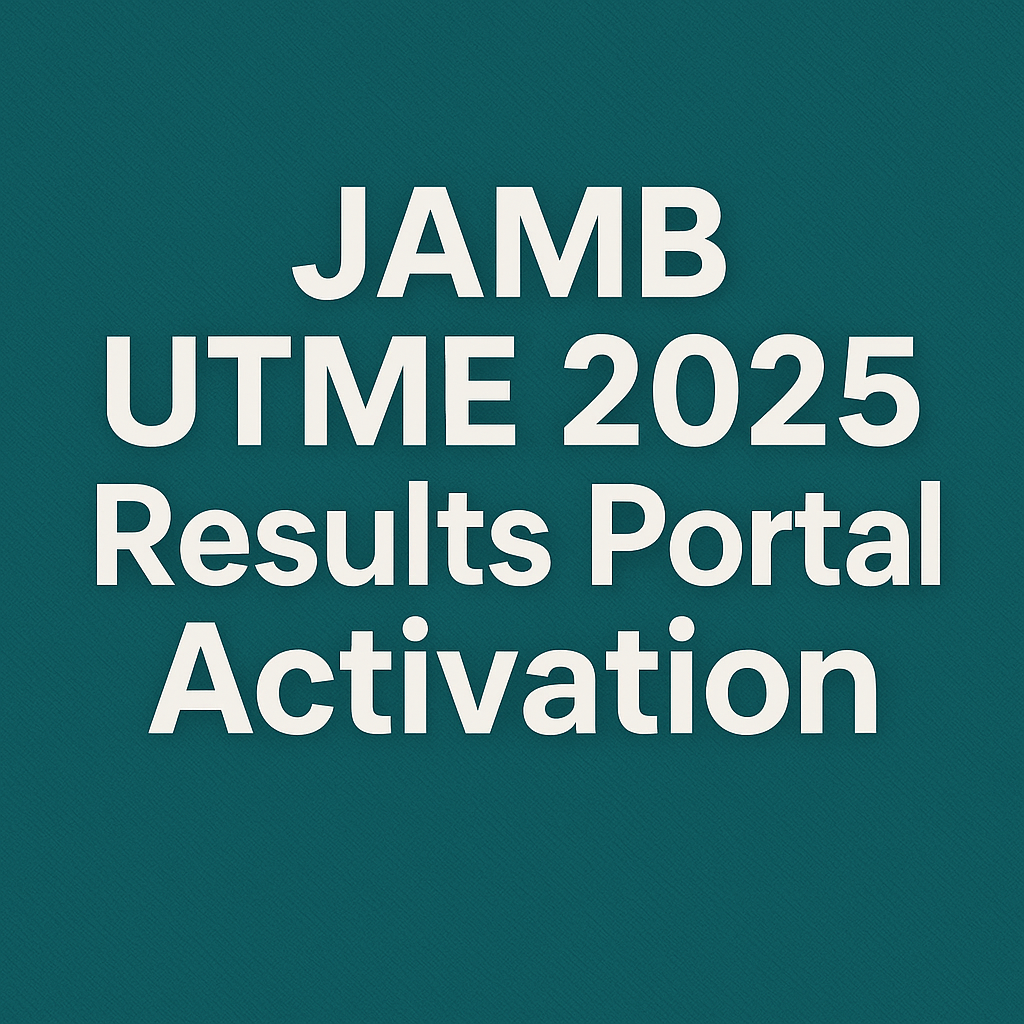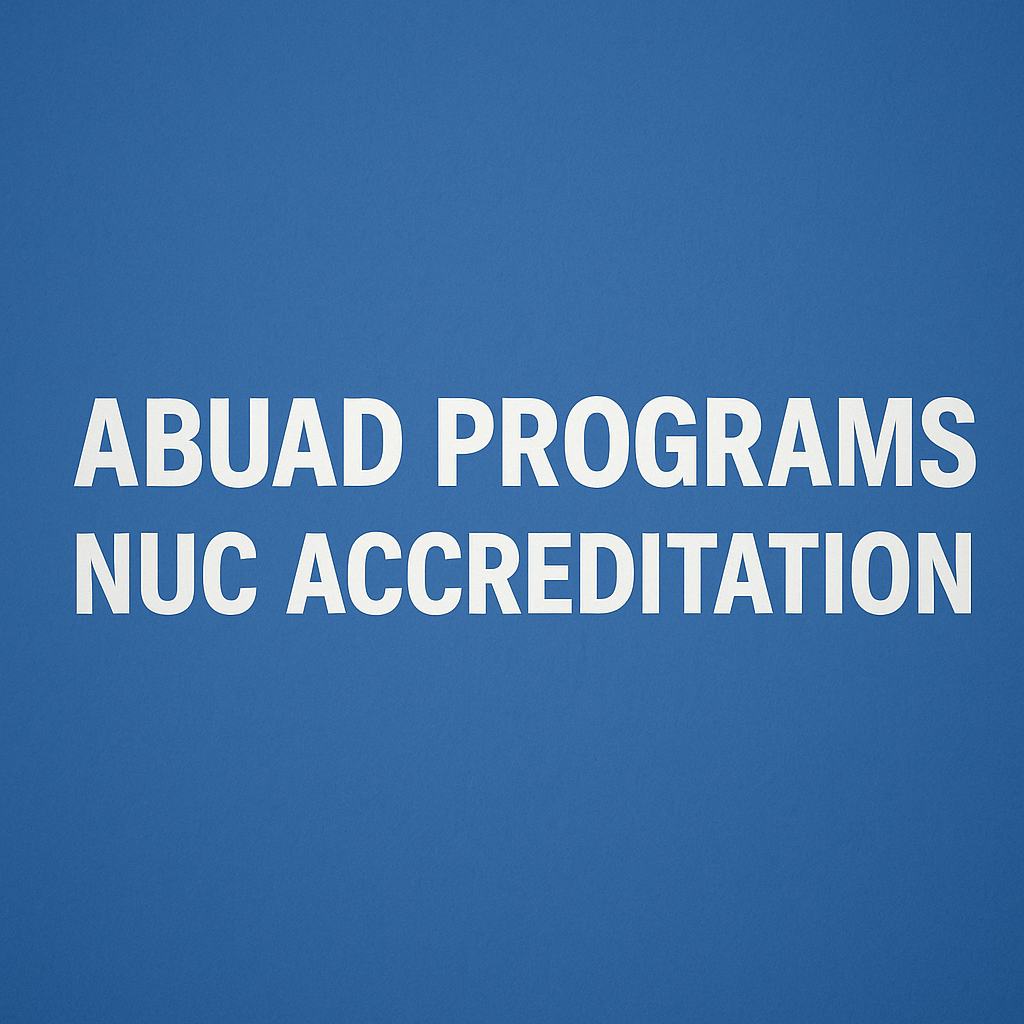You guys! That time of the year is here again. You’re staring at a mountain of textbooks—Ababio for Chemistry, New General Maths, A-Z in JAMB—and that small panic starts to creep in. You can feel it, right? That little voice in your head asking, “Am I reading the right thing? What if JAMB asks about that one topic I decided to skip?”
Let’s be real, preparing for the Unified Tertiary Matriculation Examination (UTME) is a serious marathon, not a sprint. But what if I told you there’s an official map for this marathon? A guide that tells you exactly where the track is going, what obstacles to expect, and where the finish line is.
That map is the JAMB 2025 Syllabus, and honestly, trying to study without it is like trying to drive from Lagos to Abuja without Google Maps. You might get there eventually, but you’ll probably get lost, waste fuel (in this case, precious time and energy), and end up totally exhausted.
So, let’s break down this all-important document and show you how to use it to smash your 2025 UTME.
Why You Can’t Afford to Ignore the JAMB Syllabus
Think of the JAMB syllabus as a contract between you and JAMB. They are basically telling you, “This is everything we can possibly ask you. We promise not to go outside this list.” Can you imagine how powerful that is?
Ignoring it is the biggest mistake thousands of students make every year. They just pick up their textbooks and start reading from chapter one to the end, hoping for the best. Big mistake!
The syllabus helps you:
- Focus Your Energy: You’ll know which topics are a priority and which ones are just “good to know.”
- Study Smarter, Not Harder: Instead of reading 30 chapters, you might only need to focus on 15 specific ones. That’s a game-changer!
- Build Confidence: When you know you’ve covered every single thing JAMB expects you to know, your confidence on exam day will be through the roof.
The Official JAMB 2025 Syllabus Breakdown (Subject by Subject)
First things first, you need to get the official syllabus. Don’t rely on old versions or random documents you find online. Go straight to the source: the JAMB Integrated Brochure and Syllabus System (IBASS). It’s free!
Now, let’s look at what to expect in some of the core subjects.
Use of English: The Ultimate Game Changer
This is the only compulsory subject, and it’s the one that can make or break your aggregate score. The syllabus for Use of English is divided into three main parts:
- Reading/Comprehension: They will test your ability to understand passages, identify the author’s tone, and figure out the meaning of words in context. You need to practice reading different kinds of texts.
- Lexis and Structure: This is your classic grammar section—tenses, parts of speech, phrasal verbs, and sentence structure. It’s all about the rules of English.
- Oral Forms: Don’t let this one scare you. It’s just about vowels, consonants, rhymes, and stress patterns. Practice with past questions, and you’ll get the hang of it.
And of course, the Literature Text! As of now, the official novel is “The Life Changer” by Khadija Abubakar Jalli. You must know this book inside and out. Know the characters, the plot, and the key themes. JAMB will ask very specific questions about it.
Mathematics: The Foundation
For many, Mathematics is the elephant in the room. But the syllabus makes it less scary by breaking it down into five key areas:
- Number and Numeration: This includes number bases, fractions, indices, logarithms, and sets. This is a guaranteed area for questions.
- Algebra: Focus on change of subject of formulae, linear equations, quadratic equations (the almighty formula!), and inequalities.
- Geometry and Trigonometry: Brush up on your polygons, circles (especially circle theorems), and of course, SOHCAHTOA.
- Calculus: Just the basics! You’ll need to understand differentiation and integration of simple algebraic functions.
- Statistics: They love questions on mean, median, mode, and basic probability. Make sure you can interpret charts and graphs.
Key Science Subjects (Physics, Chemistry, Biology)
If you’re a science student, these are your big three. Here’s a quick look:
- Physics: The syllabus is heavy on Mechanics (motion, projectiles, Newton’s laws), Electricity and Magnetism (Ohm’s law, circuits), Waves and Optics, and Modern Physics (radioactivity). Don’t ignore the simple topics!
- Chemistry: You must know your Stoichiometry (balancing equations, mole concept). Other critical areas are Organic Chemistry (IUPAC nomenclature is a must!), Acids, Bases, and Salts, and the Periodic Table.
- Biology: The syllabus covers a wide range, from Cell Biology and Genetics (Mendel’s laws!) to Ecology (ecosystems, population studies) and Physiology (digestive, respiratory, and circulatory systems).
For the Arts & Social Science Gurus
Your subjects are just as important. Let’s look at a few popular ones.
- Government: Key topics include the Constitution, Types of Government (democracy, military rule), Political Parties and Ideologies, and International Organizations (UN, AU, ECOWAS).
- Literature-in-English: You need to know all the recommended texts (dramas, poems, prose) for your year. The syllabus will list them out. Focus on literary devices, themes, and character analysis.
- Economics: The syllabus is built on the pillars of Microeconomics (demand and supply, theory of production) and Macroeconomics (national income, inflation, international trade).
Okay, I Have the Syllabus… Now What? (Your Action Plan)
Getting the syllabus is step one. Using it effectively is the real secret to success.
1. Create a “Syllabus-Based” Timetable
Don’t just write “Monday – Maths.” Be specific. Write “Monday – Maths (Quadratic Equations & Logarithms).” Use the syllabus to break down each subject into smaller, manageable topics.
2. The Traffic Light System
Print out your syllabus. Go through each topic and colour-code it:
- Green: Topics you know very well.
- Yellow: Topics you kind of know but need to revise.
- Red: Topics you have no clue about. Now you know exactly where to focus your efforts. Start with the red topics!
3. Practice with Past Questions
Once you’ve studied a topic from the syllabus, immediately find past questions related to it. This is the most effective way to see if you truly understand the material and to get used to how JAMB sets its questions.
Conclusion
Look, the road to getting that high UTME score is paved with smart preparation, not just hard work. The JAMB 2025 syllabus is your most valuable tool. It’s your guide, your checklist, and your confidence booster all in one.
Stop studying blindly. Download the syllabus today, break it down, and build your study plan around it. You’re not just trying to pass; you’re trying to get a score that gets you into your dream course at your dream university.
You’ve got this. Now go and make it happen!
What are your subject combinations? Drop them in the comments below, and let’s help each other out!


